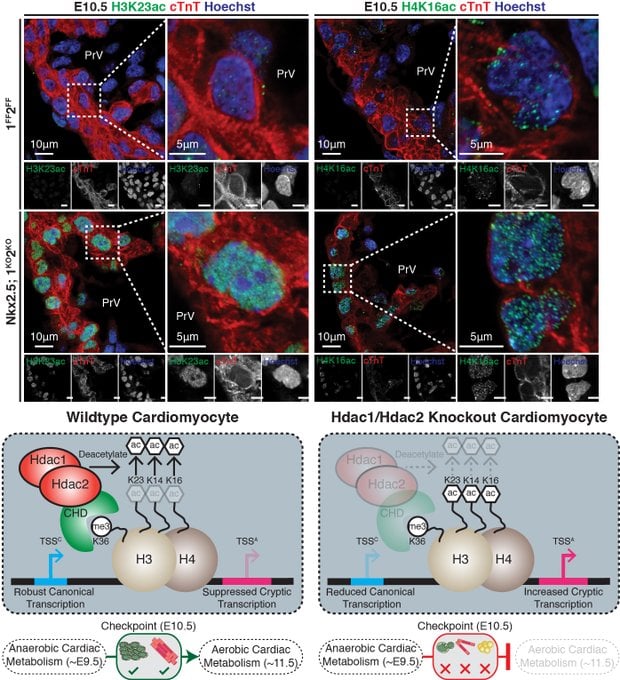Congenital Heart Disease (CHD)
Our recent study identifies a causal relationship between Congenital Heart Disease (CHD), the most common developmental defect in children, and defective developmental energy generation (Science Advances). We demonstrated that two class I histone deacetylases, Hdac1 and Hdac2, silence cryptic transcription to promote mitochondrial function in developing murine hearts. Cryptic transcription is observed in lower organisms and mammalian cell lines, yet no reports describe cryptic transcription in a vertebrate system. This report is the first link between chromatin-modifying enzymes and cryptic transcription during vertebrate development and the first to link cryptic transcription and energy production during cardiogenesis.

We established a critical interplay between chromatin-modifying enzymes and transcription factors during the pathogenesis of congenital heart defects in Holt-Oram Syndrome (Human Molecular Genetics). We described a specific and novel function of Hdac3 in cardiac progenitor cells during early murine heart development. TBX5, the causative gene in the Holt-Oram Syndrome, was the first identified single-gene mutation giving rise to congenital heart defects. Our studies reveal a critical mechanistic relationship between TBX5G125R, a gain-of-function mutation identified in patients with Holt-Oram Syndrome, and Hdac3. We uncover a mechanism whereby Hdac3 physically interacts with Tbx5 and modulates its acetylation to repress Tbx5-dependent activation of cardiomyocyte lineage-specific genes.
